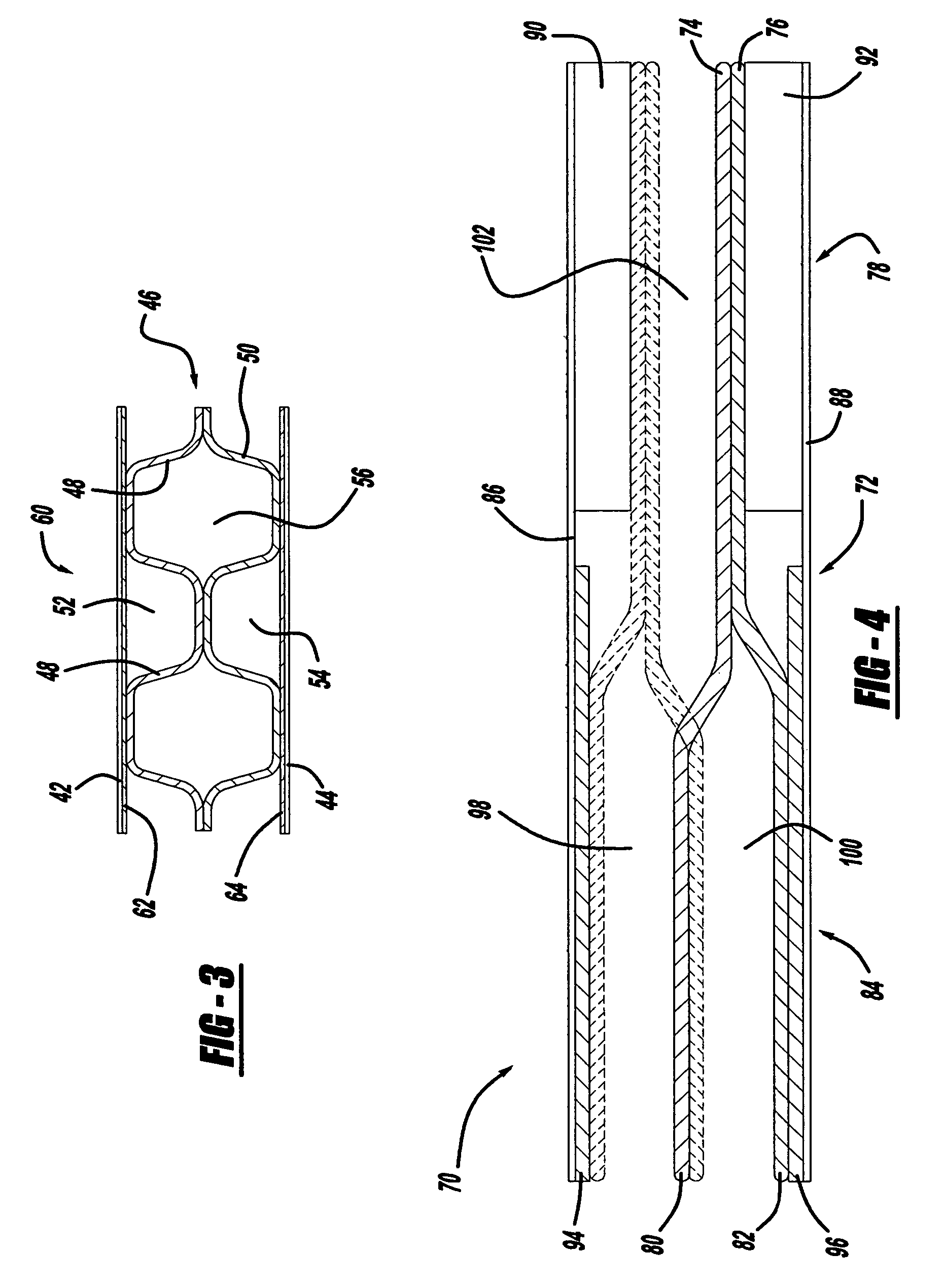Reactant feed for nested stamped plates for a compact fuel cell
a fuel cell and reactant technology, applied in the field of reactant feed for compact fuel cells, can solve the problems of adversely affecting the flow rate and performance of the stack, relatively high cost of meas, etc., and achieve the effect of reducing the thickness of the stack and increasing the distance between adjacent meas
- Summary
- Abstract
- Description
- Claims
- Application Information
AI Technical Summary
Benefits of technology
Problems solved by technology
Method used
Image
Examples
Embodiment Construction
[0022] The following discussion of the embodiments of the invention directed to a fuel cell design is merely exemplary in nature, and is in no way intended to limit the invention or its applications or uses.
[0023] According to the present invention, a fuel cell design is described that includes nested stamped bipolar plates in an active region of the fuel cell and non-nested stamped bipolar plates in an inactive feed region of the fuel cell. FIG. 2 is a partial cross-sectional view through an inactive feed region of a fuel cell stack 40. The stack 40 includes adjacent membranes 42 and 44 that are part of two adjacent MEAs in the stack 40. The fuel cell stack 40 also includes a bipolar plate assembly 46 having two stamped non-nested bipolar plates 48 and 50. The plates 48 and 50 are stamped so that they define anode flow channels 52, cathode flow channels 54 and coolant flow channels 56.
[0024] It is necessary that the plates 48 and 50 be non-nested in the feed regions of the stack ...
PUM
 Login to View More
Login to View More Abstract
Description
Claims
Application Information
 Login to View More
Login to View More - R&D
- Intellectual Property
- Life Sciences
- Materials
- Tech Scout
- Unparalleled Data Quality
- Higher Quality Content
- 60% Fewer Hallucinations
Browse by: Latest US Patents, China's latest patents, Technical Efficacy Thesaurus, Application Domain, Technology Topic, Popular Technical Reports.
© 2025 PatSnap. All rights reserved.Legal|Privacy policy|Modern Slavery Act Transparency Statement|Sitemap|About US| Contact US: help@patsnap.com



